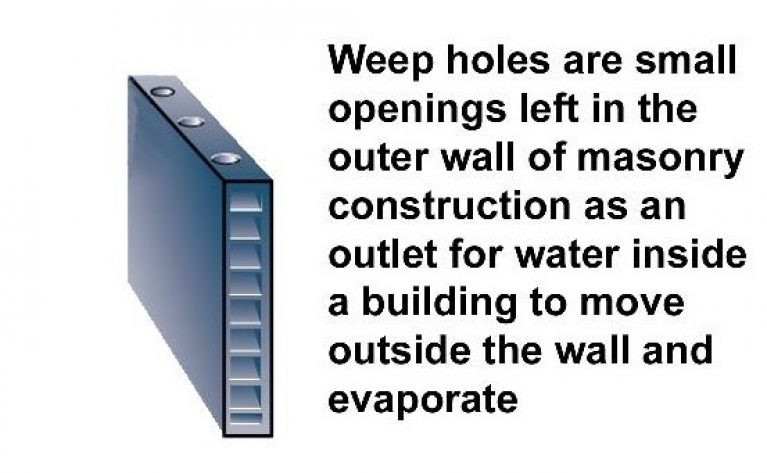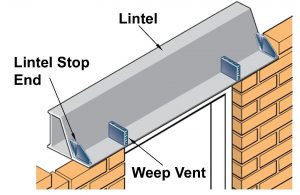What is a Weep Vent?

Although we have included weep vents in the roofing insulation and ventilation section of the Wonkee Donkee website, they are really about ventilating properties as a whole.
Weep vents sit within the wall cavity of buildings and are installed in order to provide ventilation of air whilst also to drain any condensation build-up that may have entered the walls cavity. By removing this moisture and allowing air to flow through the walls cavity, weep vents help prolong the life of the wall and make it less prone to structural damage.
In this Wonkee Donkee weep vent guide, we look at what is a weep vent and why it is different to a weep hole.
What is the purpose of a weep vent?

As we touched on in the introduction to this weep vent guide, the main role of weep vents is to allow for air to flow through masonry walls as well as allow water (from the build-up of condensation) to be drained away.
To understand the need for weep vents, we must first understand the materials surrounding them. Masonry walls are built of brick and stone which are both porous materials. These two walls have a 1.5-inch cavity between them in which is required to abide by building regulations and in this cavity water and moisture can build-up. If left unattended this water can cause issues from damp and rotting too much more serious issues like structural failure.
This is where weep holes come in. Weep holes are objects that sit within the internal wall of the building and are angled downwards and then out of the external wall. These help to catch and incoming water as well as moisture from things such as condensation and guide it out of the cavity.
When you install a window, door or any other feature within a masonry wall you will also need to use something similar to a weep hole in order to help drain out any water or moisture. These sit above the window or door and catch the water and guide it out over the feature. This prevents any pooling of this water above these features which could lead to structural failure.
What is the difference between a weep vent and a weep hole?

As we described in the previous section, weep vents are used to surround windows, doors and other features within a masonry wall. Often confused with weep holes, they complete fairly similar roles they just vary slightly in their design and positioning. Weep holes sit within the masonry wall and are spaced 16 to 24 inches apart which is required by legal regulations.
Typically, in the construction of masonry walls, you will have an internal wall and an external wall. These are called the inner leaf (internal wall) and outer leaf (external wall). In between these walls is a cavity of 1.5-inches which is a building requirement. Within the cavity of these walls are wall ties and weep holes. Wall ties are important to keep the walls together and provide structural stability.
However, the weep holes also complete a very important role in order to maintain the health of the wall. Weep vents provide effective drainage out any moisture that penetrates the wall. There are many different ways in which water can enter the cavity between these walls including a build-up of condensation, general porous masonry, leaks, capillary action or in the worse scenarios, flooding. Weep holes work through being angled pointing downwards from the internal wall to the external wall. This allows for any water collected to naturally flow downwards and to the external of the building.
They also provide a level of ventilation between the two walls which is important in order to preserve the health of the wall structure. A lack of ventilation in the cavity between these walls can lead to unwanted problems such as damp, dry rot and mildew. These can only be minor issues in the short term but long term they can cause serious problems.







